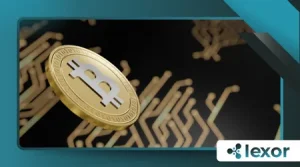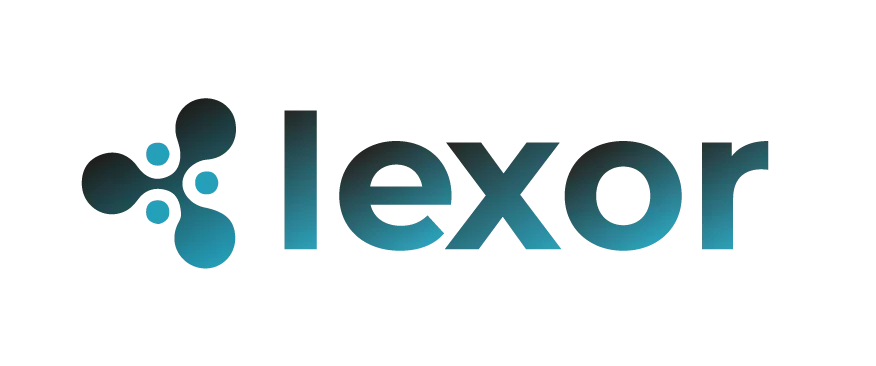How to Choose the Right Blockchain for Your Project

To choose the right blockchain for your project is a critical decision. It’s akin to laying the foundation of a skyscraper; a strong, suitable base ensures the entire structure’s stability and longevity.
This choice will profoundly impact your decentralized application (dApp) or solution’s performance, scalability, security, and cost-effectiveness.
Understanding Your Project’s Core Needs.
Before diving into the myriad of available blockchains, take a step back. Clearly define your project’s primary objectives.
Is it a high-frequency trading platform, a secure supply chain tracker, or a decentralized social media network?
Consider your target audience and their technical proficiency. This helps determine the level of user experience (UX) and abstract complexity needed for adoption.
Think about the transactional throughput your application will demand. Will it process thousands of transactions per second, or will a slower pace suffice?
What kind of data will your project handle? Is it sensitive personal information, public records, or small, verifiable data points?
Key Factors in Blockchain Selection

Several crucial factors must guide your decision-making process. Each blockchain boasts unique characteristics. Evaluate these carefully against your project’s specific requirements.
Scalability and Transaction Throughput
Scalability is paramount for mass adoption. Can the blockchain handle a growing number of users and transactions without performance degradation?
++Teaching Kids to Recognize Emotions Using Interactive Tech
Different consensus mechanisms offer varying levels of throughput.
For instance, Proof-of-Work (PoW) chains like Bitcoin prioritize security but often sacrifice speed. Newer solutions, like sharding or layer-2 protocols, address these limitations.
Consider the potential for future growth. A blockchain that scales with your project will prevent costly migrations later.
Security and Decentralization
Security is non-negotiable in the blockchain space. A robust blockchain protects against attacks and ensures data integrity.
Decentralization often correlates directly with enhanced security, making the system more resilient.
++What Is a DAO? A Beginner’s Guide to Decentralized Organizations
A highly decentralized network has many independent nodes, making it incredibly difficult for any single entity to control or corrupt the network. Centralization, conversely, introduces single points of failure.
Assess the blockchain’s track record concerning security breaches. A history of stability instills greater confidence.
Cost-Effectiveness (Gas Fees)
Transaction fees, often called “gas fees,” can significantly impact user experience and operational costs. These fees fluctuate based on network congestion and the blockchain’s design.
++What Is Decentralization in Blockchain?
High gas fees can deter users and make certain dApps economically unfeasible. Conversely, very low fees might signal a less secure or less decentralized network.
Balance the need for affordability with the blockchain’s overall value proposition. Sometimes, a slightly higher fee is justifiable for superior security or features.
Developer Ecosystem and Tools
A vibrant developer community and comprehensive toolset simplify development and ongoing maintenance.
Look for extensive documentation, active forums, and readily available Software Development Kits (SDKs).
The availability of smart contract languages, such as Solidity for Ethereum, is also crucial. A robust ecosystem accelerates development and troubleshooting.
Read more: List of Top 10 Blockchain Platforms in 2025 – Select the Best Blockchain Platform
Consider the availability of auditing services and security tools. These are essential for ensuring the integrity of your smart contracts.
Interoperability and Cross-Chain Solutions
In today’s interconnected world, interoperability is increasingly important. Can your dApp interact with other blockchains? Cross-chain solutions facilitate seamless asset transfer and communication.
This capability expands your project’s reach and potential user base. It allows for greater flexibility and composability within the broader Web3 ecosystem.
Look for blockchains that are actively pursuing interoperability initiatives. This future-proofs your project against fragmentation.
Navigating the Blockchain Landscape: Examples
Let’s illustrate with some concrete scenarios to help you to choose the right blockchain for your project. Imagine you’re building a decentralized identity solution.
You’d prioritize a highly secure, privacy-focused blockchain with strong cryptographic primitives.
Permissioned blockchains might be suitable here, offering controlled access while maintaining data integrity.
Consider a project focused on digital collectibles (NFTs) that requires high transaction volume and low fees for frequent minting and trading.
A blockchain with high throughput and efficient consensus, like a Proof-of-Stake (PoS) chain or a Layer 2 solution on Ethereum, would be ideal.
An example here could be Polygon, which offers lower fees and faster transactions compared to Ethereum mainnet, while still benefiting from Ethereum’s security.
The Human Element in Blockchain Selection
Beyond the technical specifications, consider the philosophical alignment of the blockchain with your project’s ethos. Is decentralization a core value, or is a more controlled environment acceptable?
The blockchain community itself is a valuable resource. Engage with developers, researchers, and project founders. Their insights can be invaluable when you are trying to choose the right blockchain for your project.
Remember, there’s no one-size-fits-all solution. The “best” blockchain is the one that best serves your specific needs.
As of 2024, a survey by Electric Capital highlighted that over 20,000 developers were actively building on Web3, a 50% increase from 2021, indicating the massive growth and diversification of the ecosystem.
This vast landscape offers many choices, reinforcing the need for careful consideration.
Multi-chain is the future
The blockchain world is not a winner-takes-all scenario. The future is increasingly multi-chain, with specialized blockchains excelling in different niches.
Understanding this allows you to leverage the strengths of various networks.
Perhaps your project will utilize a layer-1 for core security and a layer-2 for scalability. This hybrid approach offers flexibility.
Ultimately, to choose the right blockchain for your project is an iterative process. It requires research, testing, and a willingness to adapt as the technology evolves. Don’t rush this crucial decision.
| Feature | High Scalability / Low Fees | High Security / Decentralization | Specific Use Case (e.g., Gaming) |
| Example Blockchain | Solana, Avalanche, Polygon | Bitcoin, Ethereum (PoS) | Immutable X, Flow |
| Primary Benefit | Fast transactions, low cost | Robust security, censorship resistance | Optimized for specific dApps |
| Consideration | Potential for centralization, network outages | Higher fees, slower transactions | Niche appeal, less general-purpose |
Choosing a blockchain is like picking the perfect vehicle for a long journey. A sports car is great for speed, but a robust SUV is better for rough terrain.
Each has its purpose. Are you ready to embark on this journey with the right companion?
Conclusion
The decision of to choose the right blockchain for your project is multifaceted and critical for long-term success.
By diligently assessing your project’s core needs, evaluating key technical factors like scalability, security, and cost, and considering the broader ecosystem, you can make an informed choice.
The evolving multi-chain landscape offers exciting opportunities, and understanding the strengths of various networks will empower you to build resilient and innovative decentralized solutions.
Frequently Asked Questions
1. Is it possible to migrate my project to a different blockchain later?
Yes, but it can be a complex and costly process. It often involves re-architecting your dApp and porting smart contracts, which can introduce new security risks. It’s best to choose wisely from the start.
2. How important is the community around a blockchain?
Extremely important. A strong, active community provides support, contributes to development, and offers valuable feedback. It’s a sign of a healthy and growing ecosystem.
3. What’s the difference between a Layer 1 and a Layer 2 blockchain?
Layer 1 refers to the base blockchain (e.g., Ethereum, Bitcoin). Layer 2 solutions are built on top of Layer 1 to improve scalability and reduce transaction costs by processing transactions off-chain before settling them on the mainnet.
4. Should I prioritize decentralization over scalability?
It depends on your project’s specific needs. For financial applications, decentralization and security might be paramount. For high-volume gaming, scalability might take precedence, potentially accepting a slightly lower degree of decentralization.
5. How do I stay updated on new blockchain technologies?
Follow reputable crypto news outlets, engage with developer communities on platforms like Discord and Twitter, and attend industry conferences and webinars. The space evolves rapidly.
